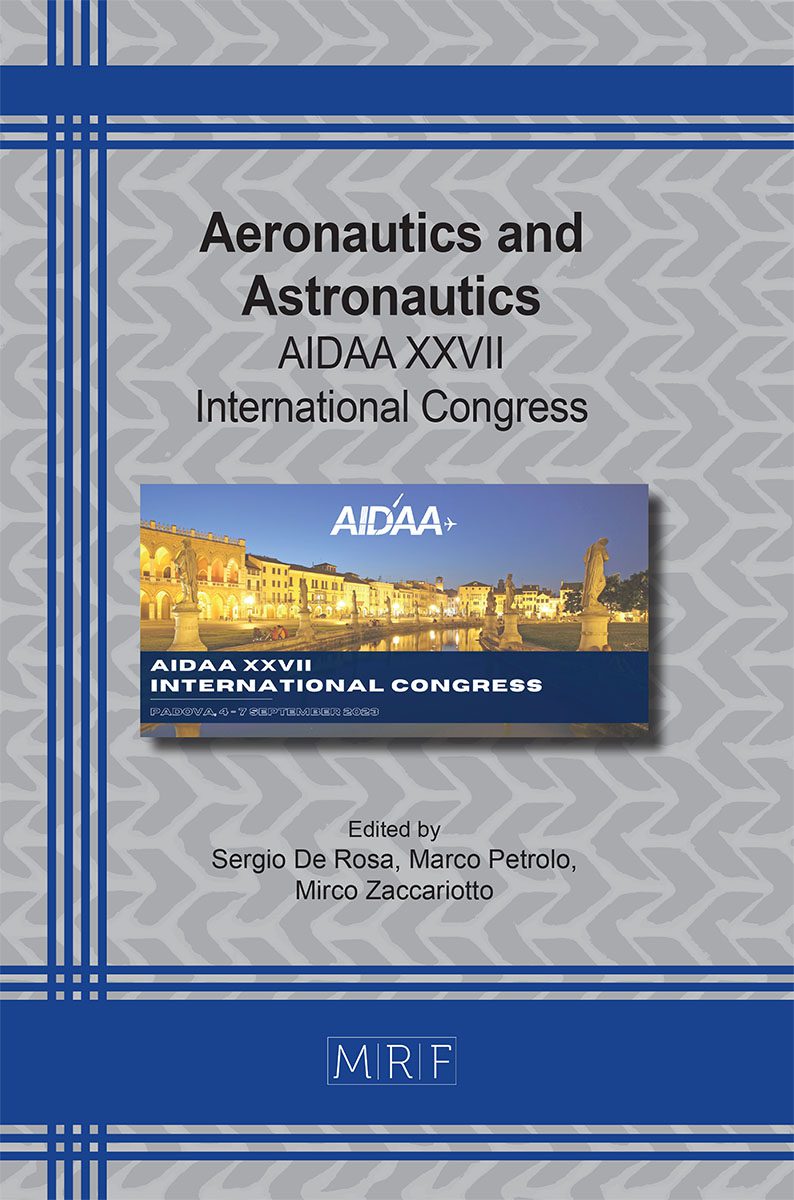Numerical tank self-pressurization analyses in reduced gravity conditions
Francesca Rossetti, Marco Pizzarelli, Rocco Pellegrini, Enrico Cavallini, Matteo Bernardini
download PDFAbstract. In this study, a suitable numerical methodology to study the self-pressurization phenomenon inside a cryogenic tank, in a reduced gravity environment is proposed. This methodology is validated with the results of a benchmark self-pressurization experiment, carried out in the liquid hydrogen tank of the second stage of the Saturn IB AS-203 vehicle. The time-varying acceleration and heat flux due to solar radiation to which the tank was exposed during the experiment, have been modeled in our analysis. Finally, the numerical results show that the proposed methodology allows to reproduce the experimental data with a reasonably good accuracy.
Keywords
VOF, Tank Self-Pressurization, Cryogenic, Reduced Gravity
Published online 11/1/2023, 4 pages
Copyright © 2023 by the author(s)
Published under license by Materials Research Forum LLC., Millersville PA, USA
Citation: Francesca Rossetti, Marco Pizzarelli, Rocco Pellegrini, Enrico Cavallini, Matteo Bernardini, Numerical tank self-pressurization analyses in reduced gravity conditions, Materials Research Proceedings, Vol. 37, pp 226-229, 2023
DOI: https://doi.org/10.21741/9781644902813-49
The article was published as article 49 of the book Aeronautics and Astronautics
![]() Content from this work may be used under the terms of the Creative Commons Attribution 3.0 license. Any further distribution of this work must maintain attribution to the author(s) and the title of the work, journal citation and DOI.
Content from this work may be used under the terms of the Creative Commons Attribution 3.0 license. Any further distribution of this work must maintain attribution to the author(s) and the title of the work, journal citation and DOI.
References
[1] W. Friz, Maximum volume of vapor bubbles, J. Physic. Zeitschz. 36 (1935) 354-379.
[2] W. D. Ward, et al., Evaluation of AS-203 low-gravity orbital experiment, NASA CR 94045 (1967) 13.
[3] F. Rossetti, et al., Setup of a numerical methodology for the study of self-pressurization of cryogenic tanks, submitted to Journal Cryogenics (2023).
[4] C. Hirt, B. Nichols, Volume of fluid (VOF) method for the dynamics of free boundaries, J. Comput. Phys. 39 (1981) 201–225. https://doi.org/10.1016/0021-9991(81)90145-5
[5] W. H. Lee, A pressure iteration scheme for two-phase flow modeling, Computational Methods for Two-Phase Flow and Particle Transport (2013) 61–82. https://doi.org/10.1142/9789814460286_0004
[6] J. Brackbill, et al. A continuum method for modeling surface tension, J. Comput. Phys. 100 1992) 335–354. https://doi.org/10.1016/0021-9991(92)90240-Y
[7] F. R. Menter, Two-equation eddy-viscosity turbulence models for engineering applications, AIAA J. 32 (1994) 1598–1605. https://doi.org/10.2514/3.12149
[8] M. M. Lemmon, E.W., D. Friend, Thermophysical properties of fluid systems, NIST Chemistry WebBook, NIST Standard Reference Database Number 69, Eds. Linstrom, P.J., and Mallard, W.G., National Institute of Standards and Technology, Gaithersburg MD, 20899. URL: https://webbook.nist.gov
[9] Ansys Fluent documentation, release 2022 R1, 2022.












